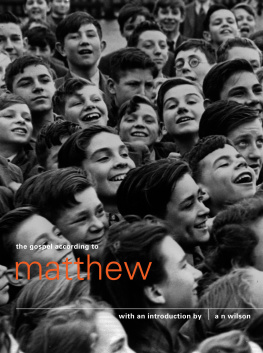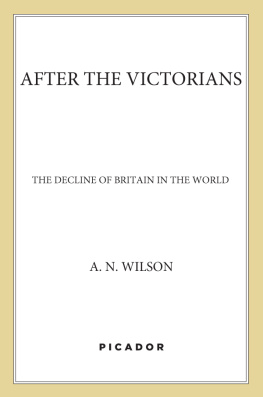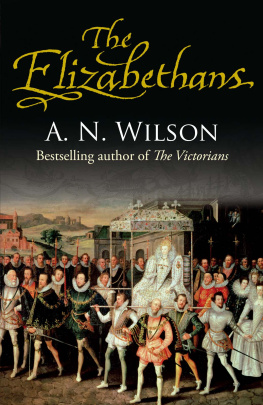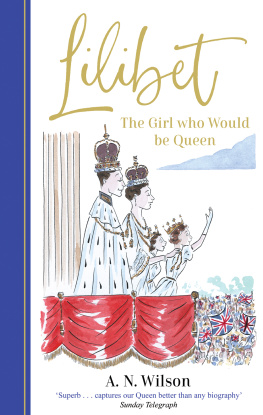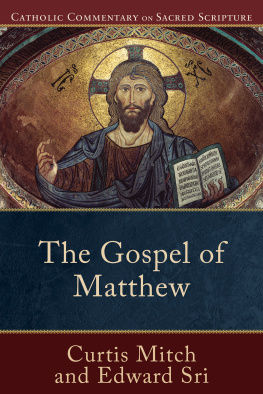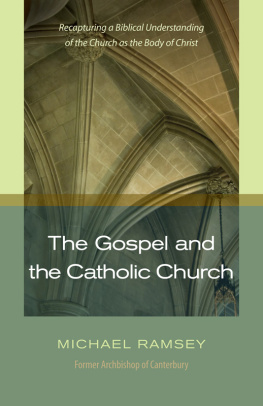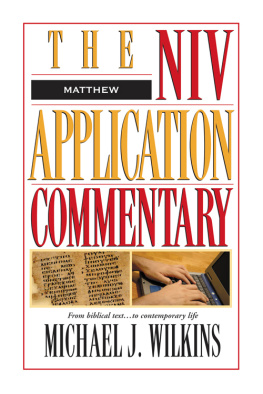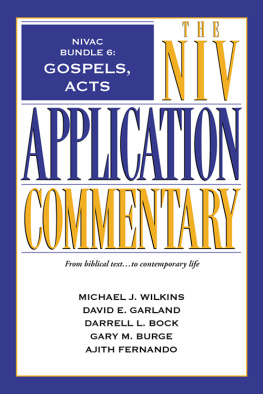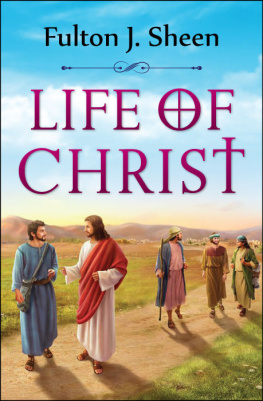A.N. Wilson - The Gospel According to Matthew
Here you can read online A.N. Wilson - The Gospel According to Matthew full text of the book (entire story) in english for free. Download pdf and epub, get meaning, cover and reviews about this ebook. year: 1999, publisher: Canongate Books, genre: Science. Description of the work, (preface) as well as reviews are available. Best literature library LitArk.com created for fans of good reading and offers a wide selection of genres:
Romance novel
Science fiction
Adventure
Detective
Science
History
Home and family
Prose
Art
Politics
Computer
Non-fiction
Religion
Business
Children
Humor
Choose a favorite category and find really read worthwhile books. Enjoy immersion in the world of imagination, feel the emotions of the characters or learn something new for yourself, make an fascinating discovery.
The Gospel According to Matthew: summary, description and annotation
We offer to read an annotation, description, summary or preface (depends on what the author of the book "The Gospel According to Matthew" wrote himself). If you haven't found the necessary information about the book — write in the comments, we will try to find it.
Recounting the birth, baptism, crucifixion and resurrection of Christ, Matthew is regarded as the most ideological portayal of Jesuss life. Some view it as a deliberate parallel to the written teachings of Judaism while the Catholic Church sees the book as a marker for its own authority. With an introduction by A.N. Wilson
The Gospel According to Matthew — read online for free the complete book (whole text) full work
Below is the text of the book, divided by pages. System saving the place of the last page read, allows you to conveniently read the book "The Gospel According to Matthew" online for free, without having to search again every time where you left off. Put a bookmark, and you can go to the page where you finished reading at any time.
Font size:
Interval:
Bookmark:
You are holding in your hands a tiny book which has changed more human lives than The Communist Manifesto or Freuds Interpretation of Dreams: a book which has shaped whole civilizations: a book which, for many people, has been not a gospel but The Gospel.
And you are bound to ask, because you are born out of time in a post-Christian age, into a world of newspapers and investigative reporting and science Is it true?
Did a Virgin really conceive (1:23) and give birth to a boy-child in Bethlehem (2:1)? Did wise men, guided by a star, come to worship him (2:2)? Did he grow up to be able to walk on water (14:26), to perform miracles, to found the Church (16:26), to rise from the dead?
Stop, stop. Dont ask. They are all questions which seem reasonable enough, but they will lead you into the most pointless, arid negativism. Your educated, scientific, modern mind will decide that no one ever walked on water; no Virgin ever conceived; that corpses do not come to life. And by rejecting this Gospel, you will reject one of the most disturbing and extraordinary books ever written; not, as you might think, on intelligent grounds, but because you (and I, alas) are too hemmed in by our imaginative limitations to see the sort of things this book is doing.
Before you apply to it the supposedly rational tests which you would apply to a newspaper report or a television documentary, imagine the chapters which describe the trial and Crucifixion of Christ set to music in Bachs Saint MatthewPassion. Consider the millions of people who, for the last 1900 years have recited the prayer (6:913) which begins Our Father. Think of the old women in Stalins Russia, when the men were too cowardly to profess their loyalty to the Church, who stubbornly continued to chant the opening verses of the Sermon on the Mount in defiance of the kgb. Blessed are they that mourn for they shall be comforted (5:4).
This is a book, not of easily-dismissed fairy tales but of power and passion; more arresting, disturbing and truthful than most reading-matter which you could buy for the price of a magazine on a station bookstall or in the paperback store. This is the Gospel of Christ, in all its terribleness, its wonder, its awe-inspiring truth and its self-contradictions.
Nor should you think that the contradictory emotions which assail and trouble you as you read it as trouble you they must are all storms and tempest inside you. For this book itself was born out of conflict and struggle and contradiction.
Matthews Gospel reflects the tension which saw the new religion what we call Christianity being fashioned from the old Judaism. It is by paradox an intensely Jewish, and an intensely anti-Jewish work indeed it is the great Ur-text of anti-semitism. The historical Jesus is not to be found in this book, nor in any book. He eludes our search. Matthews Jesus is seen through the prism of a particular faith, of a particular group, somewhere in the Mediterranean world. Rome? 85100 AD ?
By the time the book reached something like its present form (50 years after Jesus had left the scene?) Christianity was emerging as something which, if not distinct from Judaism, was at least repellent to most Jews. Pauls Letter to the Galatians (of circa 50 AD ) describes a rift between the first Christians of Asia Minor, converts of Paul, and the followers of Peter and James in Jerusalem who had known the earthly Jesus. It seems like an angry and irreconcilable quarrel. Paul, though, or because, a Jew, had decided that those who followed the Jewish Law (Torah), the Law given by God on Mount Sinai to his people, were living in bonds from which Christ came to set them free. For Peter and his friends, the dietary laws of Judaism, the requirement of circumcision, and so forth, were not bonds but wings; they were symbols of lives dedicated to God.
No compromise, surely, was possible, between these two ways? Either you circumcise your son or you dont. Either it is sinful to eat pork, or it isnt.
But to another generation, Matthews, the problems were different. The irreconcilables, rather than being fudged, are held together in self-contradiction. Peter and Paul, who in earlier New Testament texts were the leaders of opposing Ways, emerge in this text as co-partners (though, of course, Pauls ideas, rather than his name, are what we find here).
It is Jesus himself, in this legendary reconstruction, who speaks lines which, in an earlier generation of Christianity, had been assigned to protagonists in the quarrel. On the one hand, with the followers of Paul, he wants to leave the synagogue. See chapter 12, a key moment, when the Pharisees accuse Jesus of breaking the Law by healing a man on the Sabbath. His reaction is to lead his people away from the mainstream of Jewry, but he does so, as Paul had done, by quoting the Jewish Scriptures. I will put my spirit upon him, and he shall shew judgment to the Gentiles (12:18). On the other hand, Matthews Jesus is not simply a libertarian like Paul. He wishes to reassure the Jewish conservatives: Think not that I am come to destroy the law, or the prophets: I am not come to destroy, but to fulfil (5:17).
How is the miracle accomplished? It is done by seeing the new congregation or synagogue, or gathering-together of the Elect as the New Israel: the Church.
So Matthew constructs his book as a miniature Torah. Like Moses, Matthews Jesus goes up to a mountain (5:1) and delivers a New Law to his followers. At the end of the tale, in a gesture which could never have taken place in history but which is heavy with religious paradox, a pagan, Roman Governor performs a Jewish purification ritual he washes his hands to demonstrate his innocence of Christs murder. It is the Jewish mob who cry out, His blood be on us, and on our children (27:25). A terrible text which would have profound consequences in Europe during the centuries that it penetrated the collective consciousness. It was not just a few Jews in this Gospel who are responsible for the torture and death of Jesus. It is all the people (27:25).
Matthews Gospel is not just the product of the embryo-Church. It is, really, a book about the Church, and it shapes what the Church, both in East and West, was destined to become.
The Church is a house founded upon a rock; and that rock is, primarily, the teaching of Christ. Therefore, whosoever heareth these sayings of mine, and doeth them, I will liken him unto a wise man, which built his house upon a rock: and the rain descended, and the floods came, and the winds blew, and beat upon that house; and it fell not: for it was founded upon a rock (7:245).
The teachings, of course, are the exact reverse of worldly-wise notions of security. Our obsessions with security financial, military, domestic are blown sky high by Jesuss teaching: not to lay up treasure, not to resist evil with violence. Yet a detachment from what we would call security seems like a prerequisite here for church membership. And the Church, for Matthew, is the ante-chamber of the Kingdom of God.
Font size:
Interval:
Bookmark:
Similar books «The Gospel According to Matthew»
Look at similar books to The Gospel According to Matthew. We have selected literature similar in name and meaning in the hope of providing readers with more options to find new, interesting, not yet read works.
Discussion, reviews of the book The Gospel According to Matthew and just readers' own opinions. Leave your comments, write what you think about the work, its meaning or the main characters. Specify what exactly you liked and what you didn't like, and why you think so.

